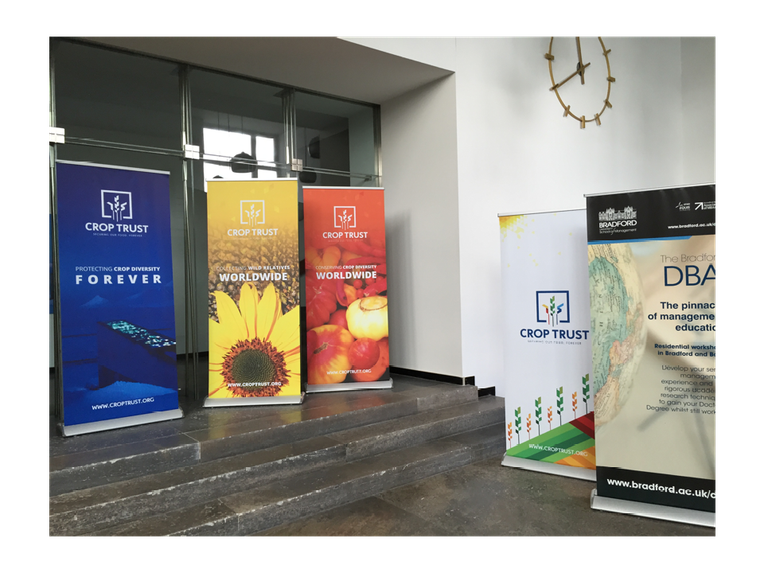Seeds
From the Series: Lexicon for an Anthropocene Yet Unseen
From the Series: Lexicon for an Anthropocene Yet Unseen

Seeds are stories that sprout in the telling. They seem to show us our roots and natures. Indigenous advocates remind us that seeds are part of our deepest histories, as kindred peoples coevolving with kindred species. As we grow worried about changing climates and losses of biodiversity, we realize seeds are important. Recently, we have seen the building of the Millennium Seed Bank in the United Kingdom, the Svalbard Global Seed Vault in the Arctic, and the Seed Cathedral at the 2010 World Expo in Shanghai. These repositories and monuments reflect a global imagination. The metaphorical power of seeds is ubiquitous within English (and other) languages: seeds of hope, seeds of despair, seeds of change, seeds of doubt, seeds of resistance, seeds of success, seeds of doom. From organic supplies and native sovereignty to invasive species and episodes of Dr. Who, seeds are on our minds. They are objects of veneration, reflection, joy, research, commodification, fiction, religious parables, bioengineering, postapocalyptic fantasies, and social movements. In a world where many factors coincide to determine future viability, seeds are tropes of possibility, condensing the desires, limits and fears of human agency.

Plant ecologist Carol Baskin tells her students, “a seed is a baby in a box with a lunch” (Hansen 2015, 9). Her metaphor explains the basic anatomy of a seed, comprising a plant embryo, a protective coating, and nutritive tissue to enable germination under appropriate conditions. The turn to anthropomorphism also highlights the ontological framing of our agricultural sciences and popular culture, for we habitually take seeds as icons of productive and reproductive potential. Seeds are the fruit of successful plant sex, and the beginning of a developmental cycle. The Old Testament used seed as a metaphor for human descendants (“seed of Abraham”), and in English, the etymologies of sperm and seed link the human and the natural world in mutually engaged reproduction.
Seeds and the plants that grow from them have been our old friends, cousins, ancestors, gods, playmates, muses, and trading partners, going back to the earliest days of plant domestication. Plant geneticist Jack Harlan (1995, 239) concluded that “people everywhere were moving in the direction of food production from the beginning of the Holocene.” Harlan’s reconstruction of the beginnings of agriculture implants a multispecies origin story in every seed that farmers sow today. Particular groups of people, animals, related wild species, and companion plants all had continuing roles in the evolution of familiar domesticated varieties and the biodiversity of crops.
The stories we hear about seeds in the era of climate change often evoke trajectories of loss and mourning, for we know that seed biodiversity is vulnerable to increasing episodes of drought, heat, pests, blights, and floods that cannot always be foreseen or mitigated. Such narratives project a sense of inexorability. As Eileen Crist (2016, 24) points out, the fetishizing discourses of the Anthropocene may too easily endorse “history’s unstoppable momentum,” an assumption that implicitly affirms human exceptionalism and makes global systems, structures and inequalities seem inescapable. Perhaps the chief problem with the notion of Anthropocene is that it also reduces this human history to a species level (Hartley 2016). Anthropologists acknowledge this to involve what they call biocultural erasures, which entail forgetting different ways of being in the world that are associated with distinctive cultural ecologies. For example, one strategy for adapting agriculture to changing climates involves genetically modified seeds. To protect the proprietary rights of companies that invest in developing new crops, it is now possible to engineer these seeds for sterility. Although such “terminator seeds” have not yet been commercialized, their widespread adoption would overwrite millennia of sustainable agriculture and affect cultural survival by jeopardizing the lifeways of small farmers. Yet neither the displacement of heritage seeds nor the dispossession of traditional keepers is inevitable. A profusion of lively cultural traditions safeguards biodiversity in fields, forests and gardens.
Scientists play an important role conserving rare historical collections of seeds—for example, through the efforts of The Crop Trust, an independent foundation established by international agreement to coordinate and assist seed banks around the world. There is more to this work than putting material in the refrigerator: technical knowledge, legal frameworks, and socio-economic capacities are also involved. To enhance food security, we must also sustain cultural memory and nurture food justice movements.

In a larger sense, seeds represent creative projects in their infancy. In the Seeds of Good Anthropocenes initiative undertaken through a collaboration of Canadian, Swedish, and South African centers of research, the metaphor of seeds empowers a framework for imagining sustainability and justice in a more grounded way. Seeds of Good Anthropocenes seeks an inherently plural, interdisciplinary vision of positive change by documenting, mapping, and cataloging the approaches of projects that recognize and engage with the challenges of a changing climate, as well as our responsibility for the future. Some of the identified projects deal with food systems and actual seeds, such as the Oranjezicht City Farm in Cape Town, South Africa and the women's association gardens supported by the Great Green Wall for the Sahara and the Sahel Initiative. Other “seeds” banked in the digital collection are ideas, technical breakthroughs, institutional innovations, and social collaborations that might change the world for the better.

Seeds should never be mistaken for natural models or microcosms of a fated human journey toward either destiny or doom. Instead, they offer us innumerable surprises: hermaphroditic dandelions that pop through cracks in cement, old rice breeds made unexpectedly vigorous from weedy crosses, or ancient squash recovered by archaeologists and brought to life in twenty-first-century Menominee gardens. Seeds suggest alternative stories that may come true in the telling, as we nurture them. After millennia of coevolution, many of them now require our tending, and thus they remind us by their very nature (which is inherently bound together with the histories of specific human peoples) that we are not all merely hungry, self-entitled, increasingly greedy consumers. Instead, they inspire us to recall that many of us have always been—or may yet choose to be—the modest cultivators, weeders, waterers, minders, and seed-savers of this world.
Crist, Eileen. 2016. “On the Poverty of Our Nomenclature.” In Anthropocene or Capitalocene? Nature, History, and the Crisis of Capitalism, edited by Jason W. Moore, 14–33. Oakland, Calif.: PM Press.
Hansen, Thor. 2015. The Triumph of Seeds: How Grains, Nuts, Kernels, Pulses, and Pips Conquered the Plant Kingdom and Shaped Human History. New York: Basic Books.
Harlan, Jack R. 1995. The Living Fields: Our Agricultural Heritage. New York: Cambridge University Press.
Hartley, Daniel. 2016. “Anthropocene, Capitalocene, and the Problem of Culture.” In Anthropocene or Capitalocene? Nature, History, and the Crisis of Capitalism, edited by Jason W. Moore, 154–65. Oakland, Calif.: PM Press.